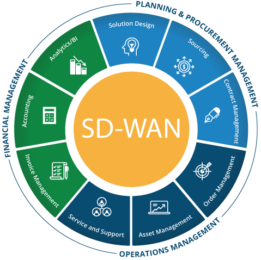 SD-WAN technology could be an excellent channel opportunity according to, SVP international, Barracuda Networks’ Chris Ross.
SD-WAN technology could be an excellent channel opportunity according to, SVP international, Barracuda Networks’ Chris Ross.
Ross said his outfit had been researching networking technology for the cloud – specifically, software-defined wide area networking (SD-WAN).
While speaking to end-users, Barracuda found some interesting insights into the EMEA channel community. There seems to be an increasing opportunity, as businesses in EMEA overwhelmingly turn to SD-WAN, despite a lack of education and skill.
Although adoption levels in EMEA might be trailing behind the US and APAC, a quarter already have SD-WAN, and just less than a third are deploying it.
Just seven percent have no SD-WAN plans at all. This leaves 18 percent who will deploy in the next few months and 14 per cent who are considering SD-WAN: a key area of opportunity for channel partners to use.
“As more of that budget is used for SD-WAN, other areas will naturally reduce, as evidenced by the fact that the majority (57 per cent) of EMEA respondents think their investment in broadband services will go down”, Ross said.
This was reflected for MPLS services (62 percent) network security appliances (60 percent), routers (63 percent) and WAN optimisation appliances (62 percent). With this shift in networking, channel partners will need to account for the future shortfall of sales for these solutions.
The IT C-Suite (CIO, CTO, CISO etc) is driving more than a quarter (28 percent) of EMEA deployments, diverging from the rest of the world, where the IT networking team drives the majority (29 percent).
Decisions seem to be made higher up the chain in EMEA, as the CEO drives eight percent of SD-WAN deployments, ahead of the US (five percent) and APAC (seven percent). These are the decision makers that the channel needs to get in front of during the SD-WAN sales process.
The EMEA region seems to suffer from a lack of SD-WAN education. Less than a third understand SD-WAN, falling far behind the US (57 percent) and APAC (41 percent). Perhaps it’s a case of being modest, but it points to an opportunity for the channel.
This perceived lack of education is leading to a lack of internal skill and understanding to deploy SD-WAN, highlighted by more than a third (34 percent) of EMEA respondents as the main issue following its deployment.
For those who haven’t yet deployed the technology, a lack of internal skill is cited by 30 percent as their most significant barrier, with a quarter not knowing enough about SD-WAN.
While the vast majority (98 percent) of those who have already deployed SD-WAN have benefited, as with any project there have been some teething problems.
A problem cited by 24 percent is poor vendor service and support. Given that EMEA organisations themselves have a lack of SD-WAN ability, training and knowledge, it’s unsurprising that they’d look to their vendor to offer this support. For channel partners, this is worth taking into consideration when choosing which SD-WAN vendor to work with, Ross said.
“We’ve got a long way to go before EMEA organisations are confident implementing and managing SD-WAN. However, our research suggests that training is the key to getting them there,” he said.
Almost two-thirds believe there’s not enough SD-WAN training in their organisation and 91 percent think technical support and consultancy is essential when looking for an SD-WAN solution.
For the channel, this means ensuring that SD-WAN packages come with a high level of consultancy and support and working closely with vendors to make this happen. SD-WAN training could be another revenue avenue.





